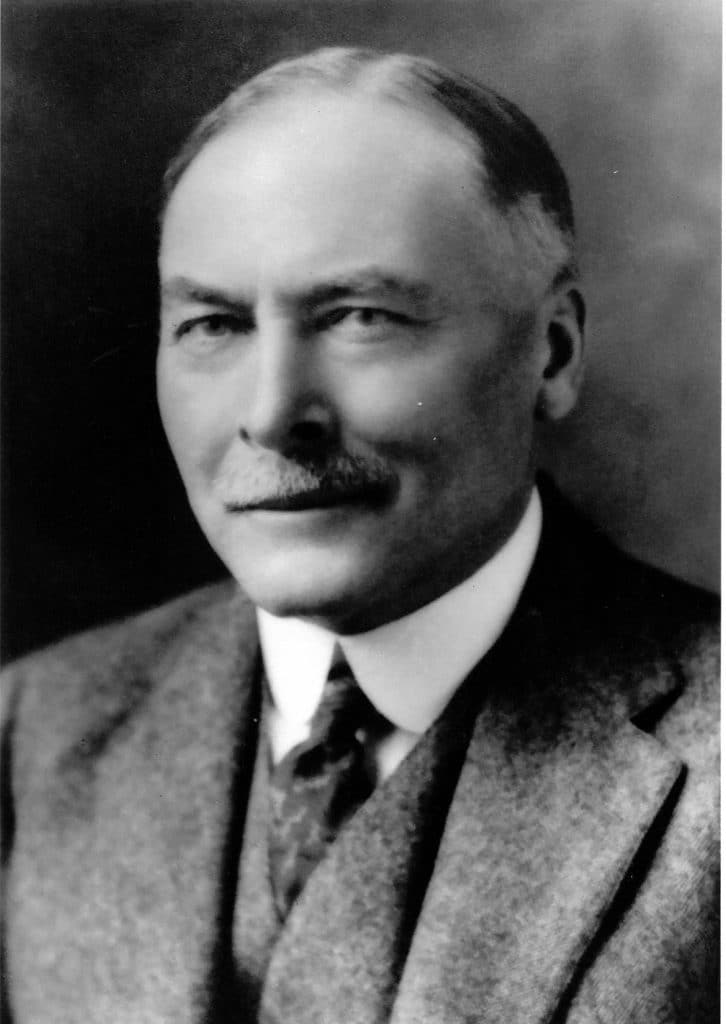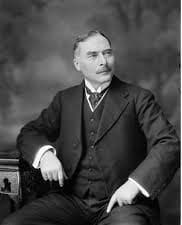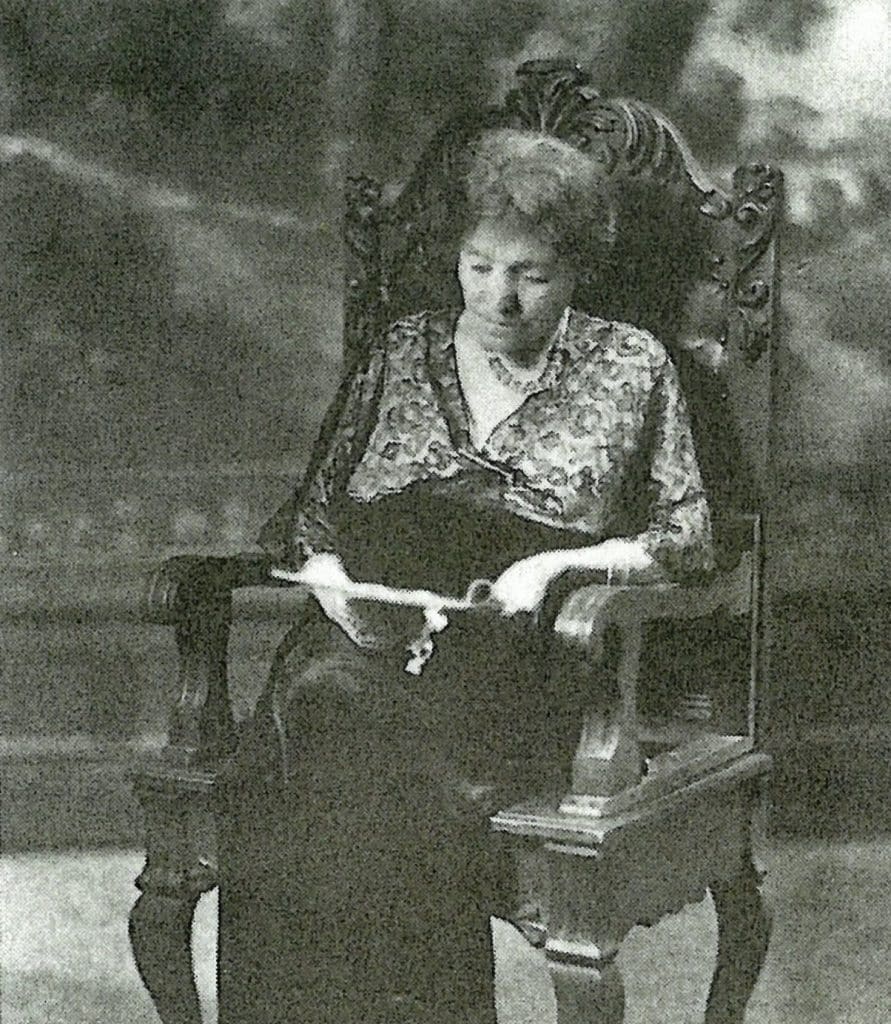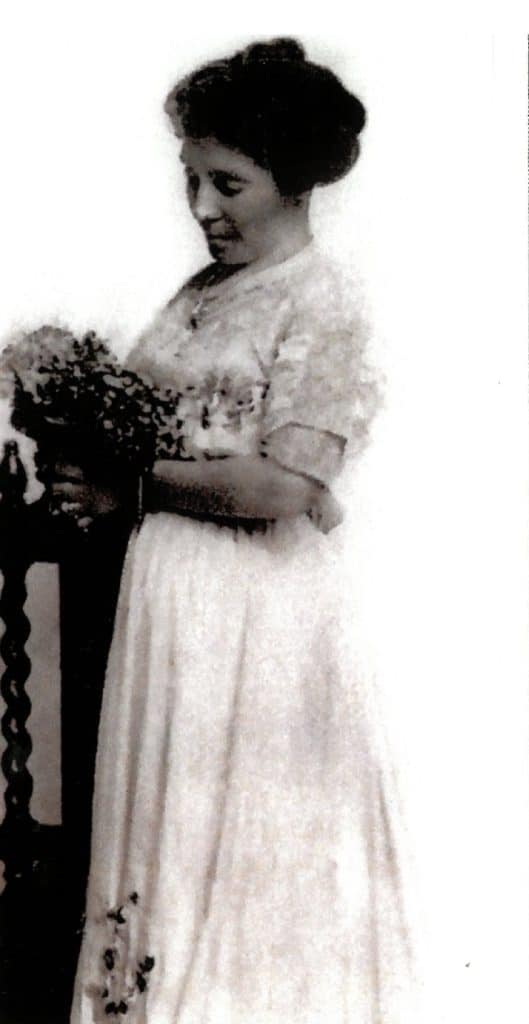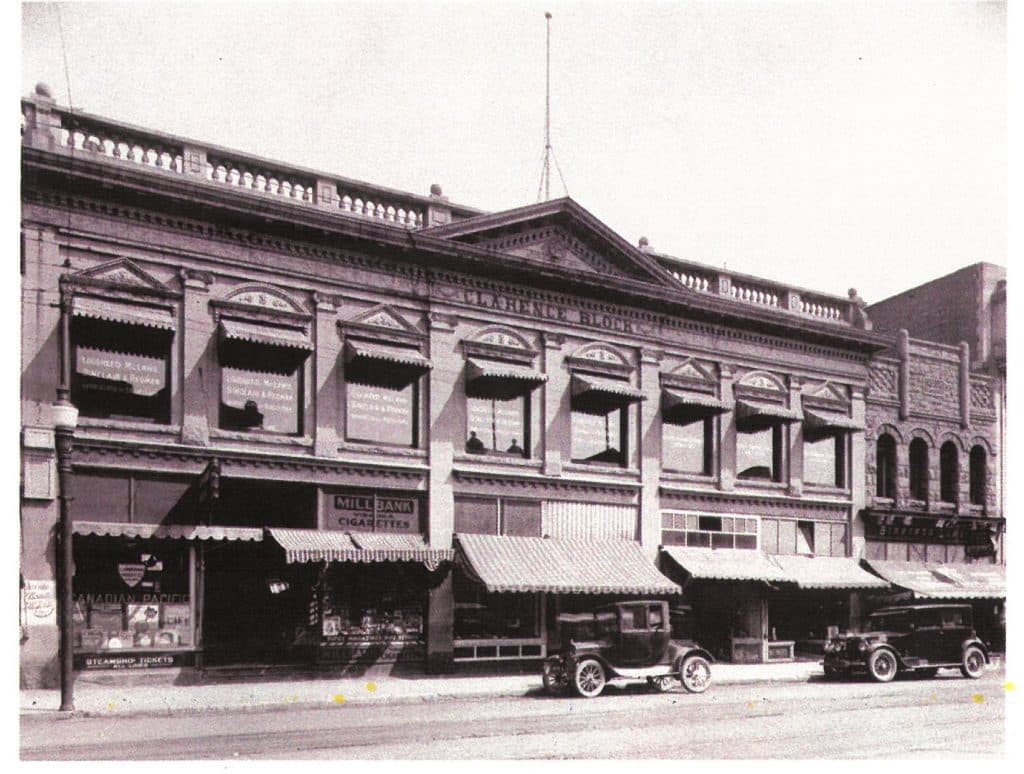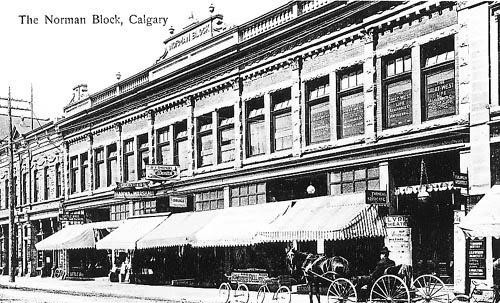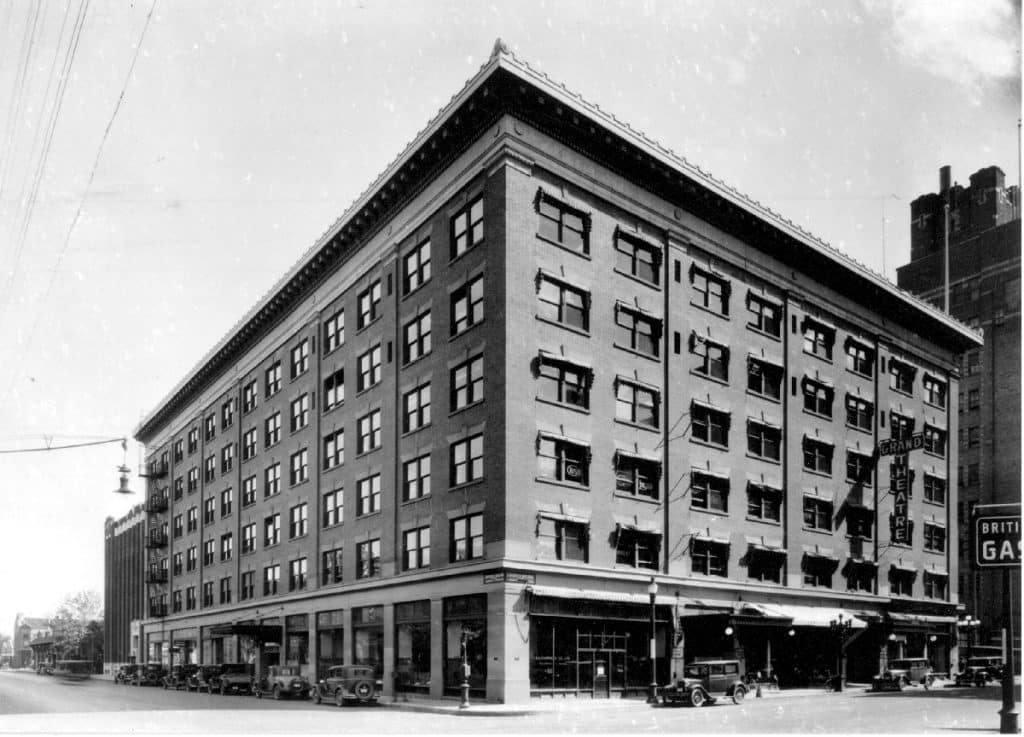Stacy F. Kaufeld, M.A.
A lawyer, businessman, politician, philanthropist, and patron of Calgary’s arts and culture, Sir James Lougheed was the one of Calgary’s original “city builders”. He was born in Brampton, Ontario on September 1, 1854, and raised in a lower-middle class family in the east end of Toronto. Before studying law at Osgoode Hall, young James was a carpenter. He articled at Beatty, Hamilton and Cassels in 1876 and 1877, and became a solicitor on May 17, 1881, and opened his own practice in Toronto.[1]
In 1882, Lougheed headed west to take advantage of the probable economic prosperity that would follow the transcontinental railway. Initially, he arrived in Winnipeg where he joined Aikins, Culver and Hamilton. Winnipeg experienced a massive population boom that more than doubled from six thousand in 1881 to fourteen thousand in 1882.[2] The city’s growth turned stagnant following his arrival. However, he established contacts with the Canadian Pacific Railway (CPR), whose primary solicitor for the west was J.A.M. Aikins.
Lougheed left Winnipeg deciding to follow the construction of the railway westward. Arriving in Medicine Hat in 1882, he set up a law office. There he made contact with Sir Herbert Holt, Chief Engineer for the CPR, and was able to secure some solicitor work for the railway. During his journey from Medicine Hat to Calgary, he met William Van Horne, a high-ranking official with the CPR and James become the railway’s primary solicitor.
James believed Calgary would become the commercial hub for the west, and expected he would both contribute to and benefit from the city’s future development.[3] Lougheed’s connections with the CPR in Calgary turned out to be crucial. Arriving in Calgary before the CPR in August 1883, he found a small settlement at the confluence of the Elbow and Bow Rivers. Lougheed set up a small law office and lived in the CPR construction camp in the vicinity that is now the Calgary Tower and Gulf Canada Square.[4] It was expected that the CPR would build its station in Section 14 where most residents lived. However, John Egan, the CPR’s superintendent, preferred Section 15, which the railway controlled and the Northwest Mounted Police kept free of trespassers.[5]
Lougheed had three interrelated revenue sources – law, real estate, and politics – that contributed to his success in Calgary. In those early years, his firm was small, but he was able to use the firms minimal income to secure his first land purchases.[6] On January 15, 1884, James purchased five lots close to what would become the completed station. Lougheed’s role as the CPR’s solicitor likely provided him with insights into the railway’s plans to develop Calgary around the new station in Section 15.[7]
During the early days in Calgary, the church served as the focal point of social life. James was both a member and trustee at the Methodist Church. It was there that James met Isabella “Belle” Hardisty, whose family were also congregants. Born in Fort Resolution, Northwest Territories on April 18, 1861, Belle was educated in eastern Canada, and moved to Calgary after the death of her father. They were married in September 1884. Together they had four sons – Edgar, Clarence, Douglas, and Norman – and two daughters – Dorothy and Marjorie.
In 1891, the family, after having their second child, moved from their downtown home to a purpose-built sandstone home on thirteenth avenue. Known as “Beaulieu”, the large mansion became the centre of social life in Calgary. Belle hosted numerous events, including a 1919 garden party for the Prince of Wales. The home also welcomed prominent out-of-town guests, notably the Duke and Duchess of Connaught in 1912.
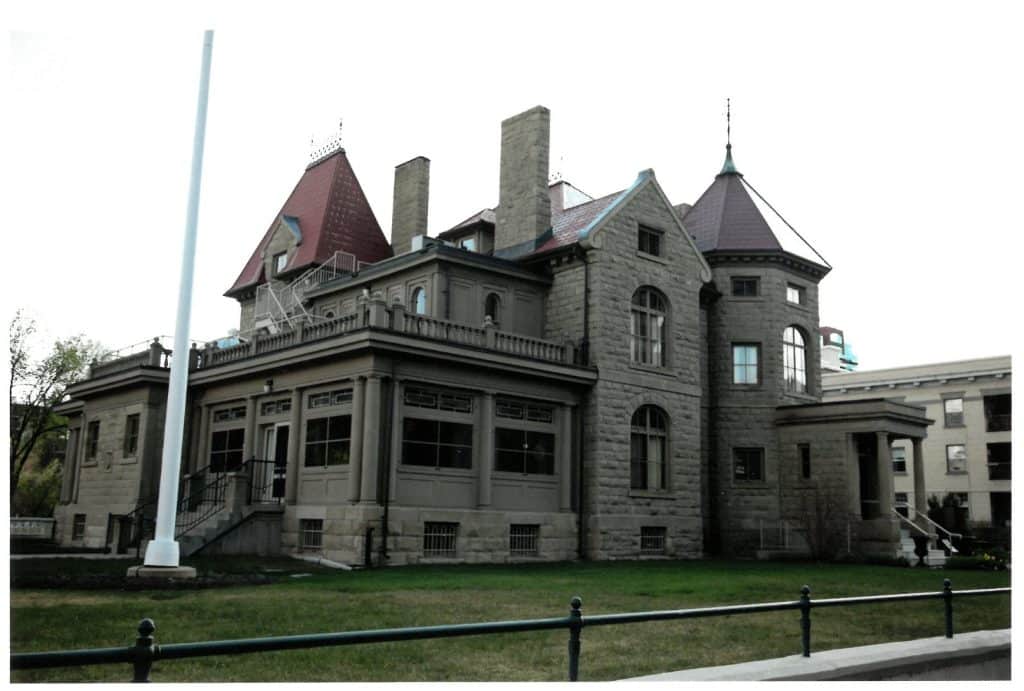
His marriage to Belle boosted his business and political interests. She was from a well-to-do family whose many relatives became prominent leaders in Canada’s political and business communities. Her father, William Hardisty, rose through the ranks of the Hudson’s Bay Company (HBC) to become its Chief Factor in Mackenzie River Valley. Her uncle, William’s brother, Richard Hardisty was Chief Factor of the HBC in the Upper Saskatchewan District. In order to capitalise on the benefits of the CPR, Hardisty moved the Hudson’s Bay Company from Fort Edmonton to Calgary during the summer of 1883.[8]
In addition to being the solicitor for the railway, Lougheed became the HBC’s solicitor. His interest in land investment was a direct result of Calgary’s economic progress. Lougheed was interested in improving and developing Calgary.[9] Following the devastating fire in November 1886 that destroyed several wood structures along Stephen Avenue, it was agreed that future buildings in Calgary would be constructed with sandstone. Following 1892, Lougheed constructed four sandstone office buildings along Stephen Avenue, each named after one of his sons. These developments contributed to the expansion of Calgary’s office and retail space. The Lougheed Building, which opened in 1912, provided Calgary with additional office, commercial, retail space, and living accommodations. Also, incorporating the Sherman Grand Theatre, once the largest in western Canada, which contributed to Calgary’s growing arts and culture scene and supported Lougheed’s economic vision for the city.
As his business interests grew, Lougheed’s law practice flourished. In 1886, he brought Peter McCarthy, a Winnipeg lawyer to join his firm, which was renamed Lougheed & McCarthy. Further growth, including representing I.G. Baker & Company, led the firm to add a third partner, Nicholas D. Beck in 1889. The firm was once again renamed Lougheed, McCarthy, & Beck. Though his law practice was doing well, Lougheed made most of his fortune through real estate development, which he kept separate from his practice. It was reported that his real estate holdings were valued at $12,175 in 1887 and two years later grew to $75,000.[10]

In 1889, Richard Hardisty, Alberta’s first Senator, was killed in a freak wagon accident while on a trip to Saskatchewan. Lougheed, a long-time Conservative supporter and vocal proponent of Prime Minister John A. Macdonald’s National Policy including a completed railway and protectionist tariffs, was appointed to replace his wife’s uncle in the Senate. Though he never really showed any interest in electoral politics, aside from his civic election loss in 1884, James did take his appointment seriously and began shuttling back and forth between Ottawa and Calgary.
Along with his successful law practice, booming real estate adventures, and Senate seat, Lougheed also had investments in Calgary Gas & Water Works Company and the Herald Publishing Company. But his partnership with McCarthy was beginning to strain. James committed to put his $1,000 Senate salary into the firm. McCarthy, however, became angered when Lougheed refused to also deposit his $425 Senate travel expenses to the firm. He further alleged that James was dishonest in his real estate dealings. Both allegations were unfounded.[11] Nevertheless, the partnership dissolved in April 1893.
Lougheed brought George S. McCarter into the firm, and it was renamed Lougheed & McCarter. It was during this period that Lougheed’s law practice experienced substantial growth. In addition to major clients, such as the CPR, HBC, and the Bank of Montreal, the firm secured significant new clients, including the North British Columbia Canadian Investment Company, Canadian Permanent Loan & Savings Company, and the town of Calgary.

By 1897, James showed less interest in his law practice and became more concerned with politics. He needed a junior lawyer who could run the office. Lougheed met with R. B. Bennett and offered the future Prime Minister the partnership. Before accepting and moving west, Bennett insisted on renegotiating the terms initially offered. The original terms are unknown, but the renegotiation resulted in the new partner receiving twenty percent on income up to $3,750 with an increase to thirty percent afterwards. This was further increased to thirty-five percent in the second year.[12] This deal favoured Bennett as an inexperienced lawyer coming into a well-established firm with a significant and growing clientele. Furthermore, became his Senate duties increasingly took Lougheed away from the office, Bennett would enjoy increased influence in the day-to-day business of the firm.[13]
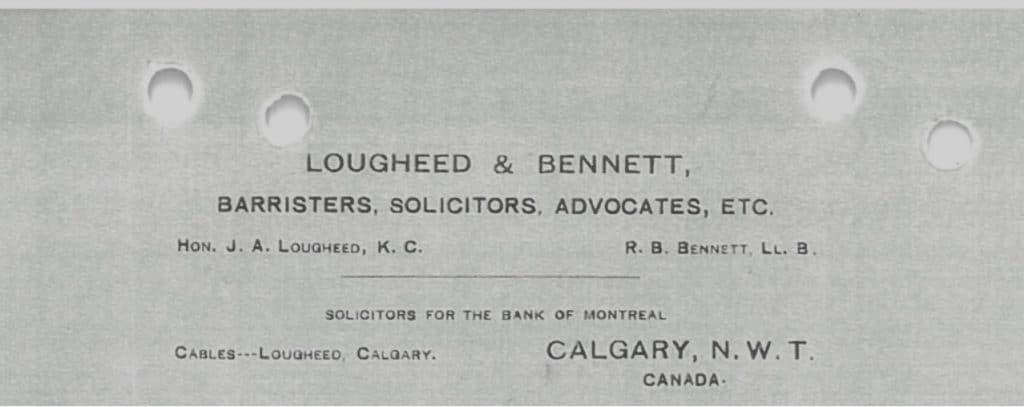
At the turn of the twentieth century, Lougheed had almost no dealings with his firm at all, his Senate responsibilities occupied almost all his time. In 1906, James was elected leader of the Conservatives in the Upper House. This allowed Bennett to effectively take full control of the Lougheed & Bennett firm, which included William McLaws after 1907. Lougheed’s political obligations increased again in 1911, when Prime Minister Robert Borden brought him in to cabinet as a minister without portfolio. Bennett also moved into federal politics as a member of parliament from 1911 to 1917.

While both partners were in Ottawa, lawyers Daniel Redman and McLaws were running the day-to-day operations of the firm. Despite this, Bennett remained under the impression that there was one partnership and two partners at the Lougheed & Bennett firm. Though there was discussion between Lougheed and Bennett about dissolving the firm, the latter was satisfied that any action was put on hold while he was in London appealing a matter at the Privy Council. Bennett got word that Lougheed began the process to dissolve the partnership, and placed the firm’s assets in receivership. Lougheed started a new partnership with Redmond Bennett attacked Lougheed personally and counterclaimed for $50,000 in damages. He also started a new firm that took most of the staff and many of the major clients. This law suit was not settled during Lougheed’s lifetime. He died on November 2, 1925, at the age of seventy-one.

The legacy of James Lougheed as one of Calgary’s earliest “city builders” is irrefutable. It is difficult to deny the effect of his business and political interests on the economic and social growth of Calgary. His family’s legacy in the law in Calgary is evident, too. His son, Edgar, became a lawyer. His grandson, Peter, became a lawyer and Alberta’s tenth Premier. His great grandson, Joseph, is a lawyer. Moreover, the successors of the Lougheed & Bennett firm still exist over one hundred years later as Bennett Jones LLP and Parlee McLaws LLP. Many of Lougheed’s developments have been lost over time. However, the Clarence and Norman Blocks, the Lougheed Building and Grand Theatre—spared from demolition in 2024—and the Lougheed House still stand as enduring symbols of James Lougheed’s historical significance in Calgary.
[1] Marian C. McKenna, “Sir James Alexander Lougheed: Calgary’s First Senator and City Builder,” in Citymakers: Calgary after the Frontier edited by Max Foran and Sheilagh Jameson (Calgary: Historical Society of Alberta, Chinook Country Chapter, 1987): pg. 97.
[2] Donald, B. Smith, Calgary Grand Story: The Making of a Prairie Metropolis from the Viewpoint of Two Heritage Buildings (Calgary: University of Calgary Press, 2005), pg. 31-2.
[3] McKenna, “Sir James Alexander Lougheed: Calgary’s First Senator and City Builder,” pg. 98
[4] Smith, Calgary’s Grand Story, pg. 34.
[5] Ibid., pg. 34.
[6] Henry C. Klassen, Eye on the Future: Business People in Calgary and the Bow Valley, 1870-1900 (Calgary: University of Calgary Press, 2002), pg. 332.
[7] Smith, Calgary’s Grand Story, pg. 34-5.
[8] Klassen, Eye on the Future, pg. 76.
[9] Ibid., pg. 332.
[10] Ibid., pg. 333.
[11] Ibid., pg. 334-35
[12] John Boyko, Bennett: The Rebel Who Challenged and Changed a Nation (Toronto, Key Porter Books, 2010), pg. 40-1.
[13] Ibid., pg. 41.

